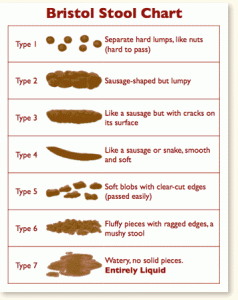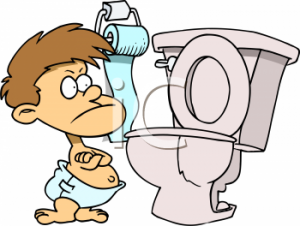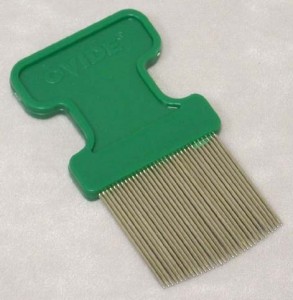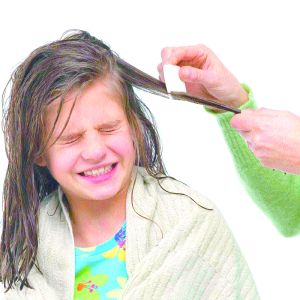Sick newborn Your baby is younger than 1 month and looks sick (eg, vomiting, cough, poor color) or acts abnormal (eg, poor feeding, excessive sleeping) in any way. At this age, these symptoms are serious until proven otherwise. During the first month of life, infections can progress quickly.
Severe lethargy Your child stares into space, won’t smile, won’t play at all, or hardly responds to you. Your child is too weak to cry, floppy, or hard to awaken. These are serious symptoms. Note: sleeping more when sick is normal, but when awake your child should be alert.
Confusion The sudden onset of confusion (delirium). Your child is awake but says strange things, sees things, and doesn’t recognize you. Note: transient delirium can be seen for 5 minutes or so with higher fevers. However, if not brief, confusion can have some serious causes.
Severe pain Severe pain is incapacitating. It interferes with all normal activities. The child just wants to be left alone. If your child cries when you try to hold or move him, this can be a symptom of meningitis or appendicitis. Children also are unable to sleep or can only fall asleep briefly.
Inconsolable crying Inconsolable, constant crying is caused by severe pain until proven otherwise. Suspect this in children who are unable to sleep or will only fall asleep briefly, and when awake will not engage in any normal activities. CAUTION: Instead of constant crying, severe pain may cause your child to groan, moan, or whimper.
Can’t walk If your child has learned to walk and then loses the ability to stand or walk, she may have a serious injury to the legs or a problem with balance. If your child walks bent over, holding her belly, she may have a serious problem such as appendicitis.
Tender abdomen Press on your child’s belly while he is sitting on your lap and looking at a book. You should be able to press an inch or so in with your fingers in all parts of the belly without a problem. If your child winces or screams, it suggests a serious cause. If the belly is bloated and hard along with the pain, the problem is even more worrisome. Note: if your child just pushes your hand away, it probably means you haven’t distracted him enough.
Tender testicle or scrotum Sudden pain in the groin area can be from twisting (torsion) of the testicle. This requires surgery within 8 hours to save the testicle.
Hard time breathing Breathing is essential for life. Most childhood deaths are due to severe breathing problems. If your child has trouble breathing, tight croup (harsh sound when breathing in called stridor), or obvious wheezing or grunting with each breath, she needs to be seen immediately. Other signs of respiratory distress are fast breathing, bluish lips, or retractions (skin pulling in between the ribs). Children with severe respiratory distress can’t drink, talk, or cry. Note: nasal congestion causes vibrations and some noisy breathing but usually without any trouble breathing. Check breathing after you clean out the nose with nasal washes and suction.
Bluish lips Bluish lips, tongue, or gums (cyanosis) can mean a reduced amount of oxygen in the bloodstream. Note: blueness only present around the mouth (but not the lips) can be caused by being cold.
Drooling The sudden onset of drooling or spitting when your child is ill means your child is having trouble swallowing. The cause can be a serious infection of the tonsils, throat, or epiglottis (top part of the windpipe). A serious allergic reaction can also cause trouble swallowing. Swelling in the throat could close off the airway.
Dehydration Dehydration means that your child’s body fluids are low. Dehydration usually follows severe vomiting or diarrhea. Suspect dehydration if your child has not urinated in 8 hours (more than 12 hours if your child is older than 1 year), crying produces no tears, the inside of the mouth is dry rather than moist, or the soft spot in the skull is sunken. Dehydrated children are also tired and weak. If your child is alert and active but not making much urine, she is not yet dehydrated. Children with severe dehydration become dizzy when they stand. Dehydration requires immediate fluid replacement by mouth or vein.
Bulging soft spot The soft spot in your baby’s head is tense and bulging. This means the brain is under pressure.
Stiff neck To test for a stiff neck, lay your child down, then lift his head until his chin touches the middle of his chest. If he is resistant, place a toy or other object of interest on the belly so he will have to look down to see it. Older children can simply be asked to look at their belly button. A stiff neck can be an early sign of meningitis.
Injured neck Talk to your child’s doctor about any neck injury, regardless of the symptoms. Neck injuries carry a risk of damage to the spinal cord.
Purple or blood-red spots or dots Unexplained purple or blood-red spots or dots on the skin could be a sign of a serious bloodstream infection, especially if your child also has a fever. Note: bumps and bruises on the shins from active play are different.
Any fever (above 100.4°F or 38°C) in the first 3 months of life Bacterial infections in young infants can cause serious complications. All children younger than 3 months with a fever need to be examined as soon as possible to determine if the cause is viral or bacterial.
Fever above 105°F (40.6°C) All the preceding symptoms are stronger indicators of serious illness than the level of fever. All of them can occur with low-grade fevers as well as high ones. Fevers alone are considered a risk factor for serious infections only when the child’s temperature rises above 105°F (40.6°C). Therefore if your child has a fever above 104°F (40°C) that doesn’t come down below 104°F after taking a fever medicine, call your child’s doctor.
Chronic diseases Most active chronic diseases can have some complications. If your child has a chronic disease, be sure to find out what those complications are and how to recognize them. Chronic diseases at highest risk for serious infections are those that weaken the immune system (eg, sickle cell disease, HIV, chemotherapy, organ transplant, chronic steroids). If you are talking with a doctor or nurse who doesn’t normally see your child, always tell the doctor or nurse about your child’s chronic disease (eg, asthma). Never assume the doctor or nurse already knows this.
Based on recommendations/advice in “My Child is Sick; Expert Advice for Managing Common Illnesses and Injuries”, 14th Edition, by Barton D. Schmitt





